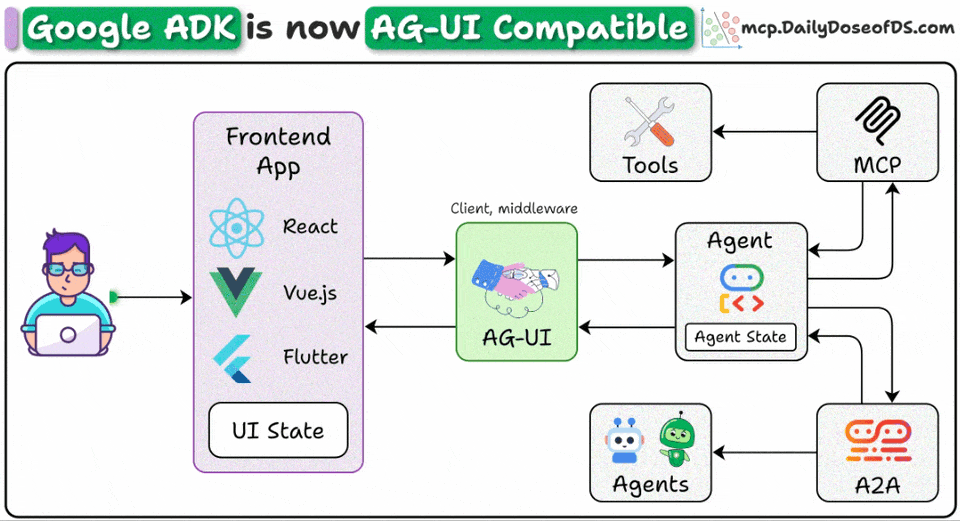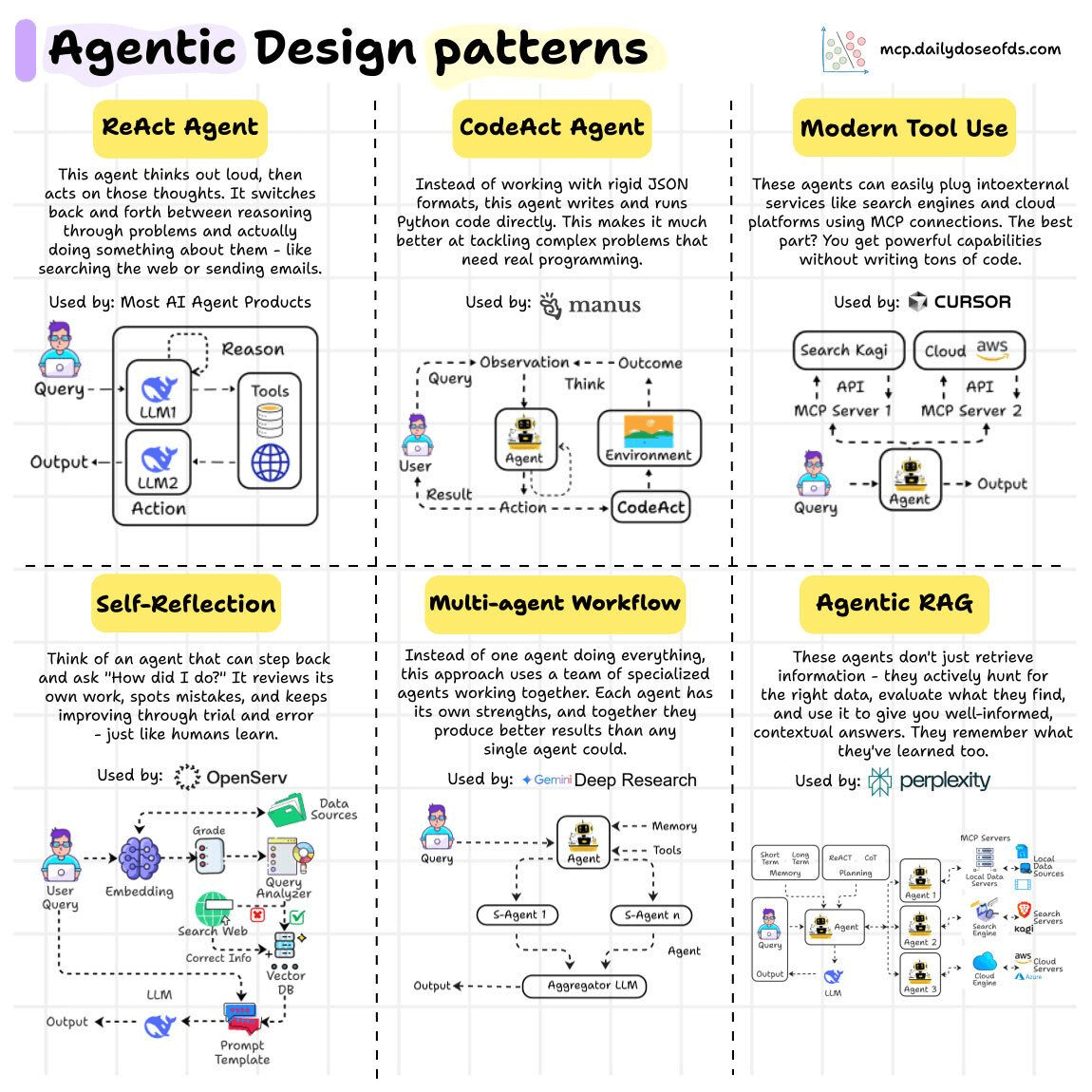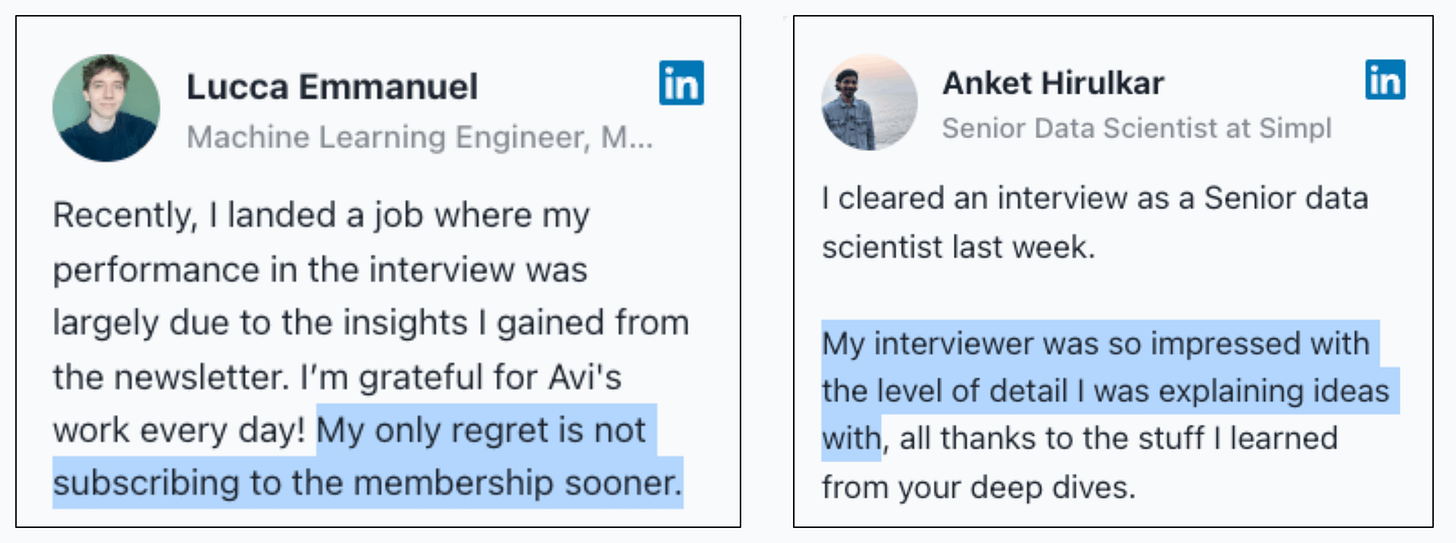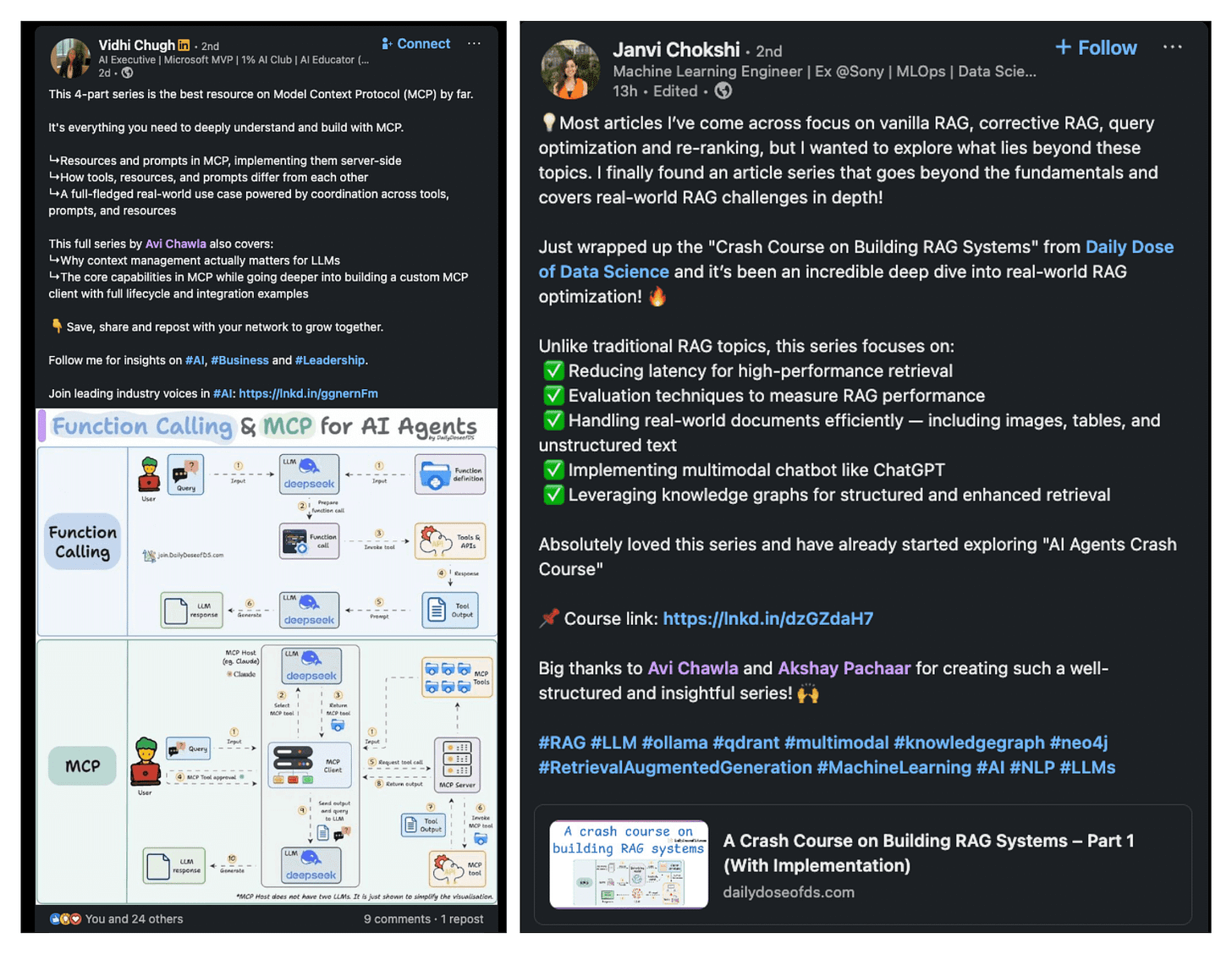6 Popular Agentic Design Patterns Used in AI Products!
...explained visually
Build front-end powered Agents with Google ADK
Google ADK is now fully compatible with all three major AI protocols:
To connect to external tools, you can use the MCP protocol.
To connect to other agents, you can use the A2A protocol.
To connect to users, you can use the AG-UI protocol.
AG-UI is the newest addition, which is an open-source protocol that enables agents to collaborate with users.
It serves as a bridge between a backend AI agent and a full-stack application.
It provides the building blocks you need to bring your agents into frontend applications.
Here’s the AG-UI GitHub repo →
These are several demos showcasing Google ADK with AG-UI integration →
6 popular Agentic design patterns!
Talking of building Agents…
When we talk about AI agents, it’s easy to think of them as a single box that takes input and gives output.
But under the hood, there are different design patterns that shape how these agents reason, act, and collaborate.
Each pattern solves a different challenge, like reasoning step by step, writing code directly, reflecting on mistakes, or even teaming up with other agents.
The visual details 6 important agentic design patterns you should know:
1️⃣ ReAct Agent
This pattern forces the Agent to think out loud and act on those thoughts. It switches between reasoning and taking action (like searching the web or sending emails).
Used by: Most AI Agent frameworks by CrewAI.
2️⃣ CodeAct Agent
Instead of sticking to rigid JSON formats, this pattern helps the Agent directly write and execute Python code. That makes it far better at handling complex tasks that need real programming.
Used by: manus AI
3️⃣ Modern tool use
These agents can easily plug into external services like search engines or cloud APIs using MCP connections. The big advantage is that you can unlock powerful capabilities with very little code.
Used by: Cursor
4️⃣ Self-Reflection
This pattern allows agents to review their own outputs, catch mistakes, and refine their approach. Think of it as an agent learning from trial and error, just like humans do.
Used by: OpenServ
5️⃣ Multi-agent workflow
Instead of one agent doing everything, this approach uses a group of specialized agents. Each agent has unique strengths, and when they work together, the results are stronger than what any single agent could achieve.
Used by: Gemini Deep Research
6️⃣ Agentic RAG
This one goes beyond simple retrieval. These agents actively search for data, evaluate what they find, and give contextual answers. They also remember what they’ve already learned, making them smarter over time.
Used by: Perplexity
In addition to these, the Planning pattern is also popular. We implemented it from scratch here →
👉 Over to you: Which popular patterns have we missed?
Thanks for reading!
P.S. For those wanting to develop “Industry ML” expertise:
At the end of the day, all businesses care about impact. That’s it!
Can you reduce costs?
Drive revenue?
Can you scale ML models?
Predict trends before they happen?
We have discussed several other topics (with implementations) that align with such topics.
Here are some of them:
Learn everything about MCPs in this crash course with 9 parts →
Learn how to build Agentic systems in a crash course with 14 parts.
Learn how to build real-world RAG apps and evaluate and scale them in this crash course.
Learn sophisticated graph architectures and how to train them on graph data.
So many real-world NLP systems rely on pairwise context scoring. Learn scalable approaches here.
Learn how to run large models on small devices using Quantization techniques.
Learn how to generate prediction intervals or sets with strong statistical guarantees for increasing trust using Conformal Predictions.
Learn how to identify causal relationships and answer business questions using causal inference in this crash course.
Learn how to scale and implement ML model training in this practical guide.
Learn techniques to reliably test new models in production.
Learn how to build privacy-first ML systems using Federated Learning.
Learn 6 techniques with implementation to compress ML models.
All these resources will help you cultivate key skills that businesses and companies care about the most.





